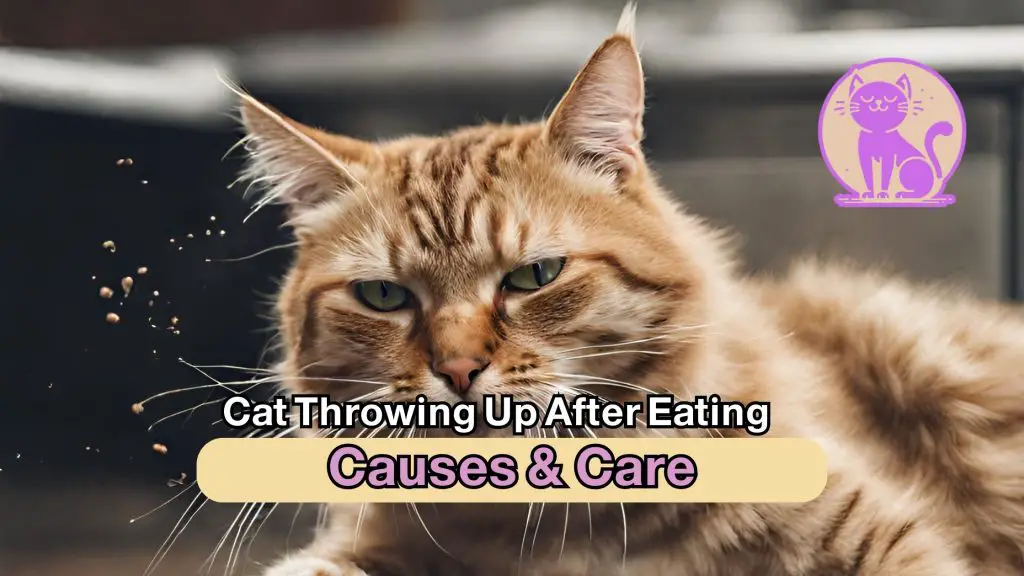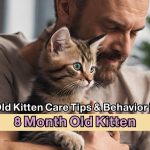Is your beloved feline companion experiencing episodes of cat throwing up after eating? It can be worrisome to witness your cat vomiting food or going through bouts of feline vomiting. In this article, we will delve into the potential causes of cat vomiting after meals and provide you with helpful tips on providing care and assistance to your furry friend.
Understanding the Digestive System of Cats
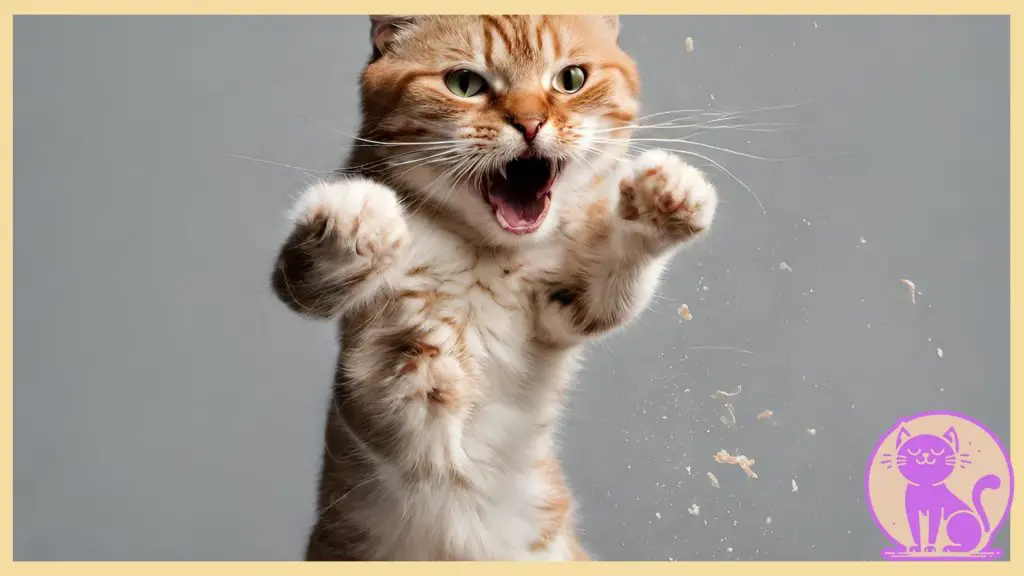
Before diving into the causes of cat throwing up after eating, it is important to understand the basic functioning of a cat’s digestive system. Cats, like many other animals, have a complex digestive system that helps break down food and extract nutrients for their overall health and well-being.
The cat’s digestive system consists of several organs working together to ensure proper digestion and absorption of nutrients. Let’s take a closer look at each of these organs and their roles:
- Mouth and Teeth: The process of digestion begins in the mouth, where cats use their teeth to mechanically break down food into smaller pieces. Their sharp teeth are designed for tearing and chewing prey.
- Salivary Glands: Cats have salivary glands that produce saliva containing enzymes to support digestion. However, their saliva production is relatively low compared to other animals.
- Esophagus: Once the food is well-chewed, it travels down the esophagus, a muscular tube that connects the mouth to the stomach.
- Stomach: The stomach is a crucial organ in the digestion process, where food is mixed with gastric juices and further broken down. The cat’s stomach has a highly acidic environment, which aids in the breakdown of proteins and kills bacteria.
- Small Intestine: After leaving the stomach, partially digested food enters the small intestine, where enzymes and bile from the liver and pancreas help break down carbohydrates, fats, and proteins.
- Large Intestine: The large intestine, also known as the colon, is responsible for reabsorbing water and electrolytes from undigested food, forming feces for elimination.
- Anus: The final part of the digestive system is the anus, where the elimination of undigested waste (feces) occurs.
Understanding the cat’s digestive system is crucial in identifying potential causes of vomiting after eating. Any disruption or malfunction in these organs can lead to digestive issues and subsequent vomiting episodes. It is important to note that vomiting can be a natural defense mechanism or a symptom of an underlying issue, which we will explore in the following sections.
| Organ | Function |
|---|---|
| Mouth and Teeth | Mechanical breakdown of food |
| Salivary Glands | Produces saliva containing enzymes |
| Esophagus | Transports food from mouth to stomach |
| Stomach | Mixes food with gastric juices |
| Small Intestine | Breaks down and absorbs nutrients |
| Large Intestine | Reabsorbs water and electrolytes |
| Anus | Elimination of waste (feces) |
Hairballs and Regurgitation
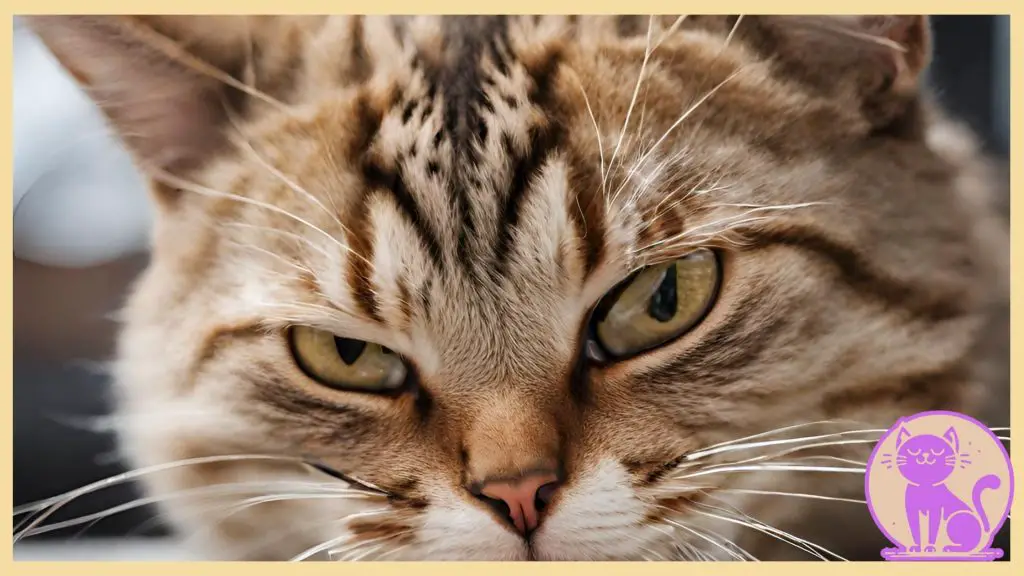
Hairballs are a common issue that many cat owners are familiar with. These compacted masses of hair can cause cats to vomit shortly after eating. Understanding why hairballs occur, how they can lead to regurgitation, and how to prevent them can help ensure your cat’s digestive health.
When kittens groom themselves, they often ingest loose hair. This hair collects in their stomach and forms into a ball-like mass known as a hairball. In an attempt to expel the hairball, cats may regurgitate it along with their food shortly after eating.
To help prevent or reduce hairballs, regular grooming is essential. Brushing your cat’s coat removes loose hair, reducing the amount they ingest. Additionally, incorporating a hairball control diet into their feeding routine can help facilitate the passage of hair through the digestive system.
Preventing Hairballs
- Regular brushing to remove loose hair.
- Feeding a hairball control diet formulated to reduce hairball formation.
- Providing access to fresh water to help lubricate the digestive system.
By taking proactive measures to prevent hairballs, you can help minimize the risk of regurgitation and ensure your cat’s digestive well-being.
| Potential Causes: | Symptoms: | Prevention Tips: |
|---|---|---|
| Excessive grooming Long-haired breeds | Frequent vomiting after eating Visible hairballs being regurgitated | Regular brushing to remove loose hair Feeding a hairball control diet |
Food Allergies and Sensitivities
Food allergies and sensitivities can be a common cause of cats vomiting after eating. Just like humans, cats can develop allergies to certain foods, leading to gastrointestinal discomfort. It is essential for cat owners to understand how food allergies in cats occur, the common allergens for cats, and the potential symptoms to look out for.
How Food Allergies Develop
Food allergies in cats develop when the immune system mistakenly identifies a particular ingredient as harmful. Over time, repeated exposure to this ingredient can trigger an allergic response, leading to symptoms such as vomiting, diarrhea, itching, or skin rashes. **Cat vomiting due to allergies** is often a sign of the body’s attempt to expel the allergen and alleviate the discomfort.
Common Allergens for Cats
Several ingredients commonly found in cat food can be allergens for cats. Some of the most frequently reported allergens include:
- Chicken
- Fish
- Beef
- Dairy products
- Wheat
- Soy
If your cat is experiencing **food allergies**, it may be necessary to identify and eliminate these allergens from their diet.
Potential Symptoms of Food Allergies in Cats
Recognizing the symptoms of food allergies in cats is crucial for timely intervention and management. Look out for the following signs that may indicate a food allergy:
- Recurrent vomiting after eating
- Diarrhea
- Excessive itching or scratching
- Red, inflamed skin or rashes
- Ear infections
If you notice any of these symptoms, it is recommended to consult with a veterinarian for a proper diagnosis and guidance on managing your cat’s allergies.
Eating Too Fast

Some cats have a habit of eating too quickly, which can lead to vomiting after meals. This behavior, known as cat eating too fast, can cause several problems for your furry friend’s digestive system. When a cat eats rapidly, they may swallow excessive amounts of air along with their food. This can result in discomfort and bloating, leading to cat vomiting from eating too quickly. Additionally, bolting down food without proper chewing can cause larger chunks of food to enter the stomach, making it difficult to digest and increasing the chances of regurgitation.
To prevent cat vomiting from eating too quickly, it is important to introduce slow feeding techniques that help your cat eat at a more leisurely pace. One effective method is to use specially designed slow feeder bowls. These bowls typically feature obstacles or ridges that slow down the cat’s eating speed by forcing them to maneuver their tongue around the obstacles to access the food. This encourages smaller bites and thorough chewing.
Another technique to encourage slower eating habits is to offer smaller, more frequent meals throughout the day. This not only slows down the eating process but also helps prevent overeating, which can contribute to vomiting. Additionally, providing interactive feeding toys or puzzles can engage your cat mentally and physically, promoting slower eating as they work to retrieve their food.
Training your cat to eat slowly may take time and patience, but it is well worth the effort to prevent cat vomiting from eating too quickly and promote better digestion. By incorporating slow feeding techniques, you can help your cat enjoy a more relaxed and comfortable dining experience.
| Benefits of Slow Feeding Techniques: | Methods for Encouraging Slow Eating: |
|---|---|
| Prevents excessive air intake Reduces bloating and discomfort Helps prevent regurgitation Encourages proper digestion | Use slow feeder bowls Offer smaller, more frequent meals Provide interactive feeding toys |
Gastrointestinal Issues
Cats can experience gastrointestinal issues that may lead to chronic vomiting after eating. It is important to understand these common problems in order to provide proper care and support for your feline friend.
Gastrointestinal Problems in Cats
Cats can suffer from a variety of gastrointestinal issues that can result in chronic vomiting. Some of the most common problems include:
- Gastroenteritis: This is the inflammation of the gastrointestinal tract, commonly caused by infections, dietary indiscretion, or a sudden change in diet. It can lead to frequent vomiting in cats.
- Inflammatory bowel disease (IBD): IBD is a chronic condition where the immune system mistakenly attacks the cat’s gastrointestinal tract. It can cause vomiting, diarrhea, and weight loss.
- Gastrointestinal obstruction: Cats may ingest foreign objects that can get stuck in their digestive system, causing blockages. This can result in vomiting after eating.
- Pancreatitis: Pancreatitis is the inflammation of the pancreas. It can lead to digestive disturbances and frequent vomiting in cats.
Symptoms and Diagnosis
When cats have gastrointestinal issues, they often experience symptoms such as frequent vomiting, diarrhea, loss of appetite, and weight loss. If you notice these signs, it is essential to consult a veterinarian for a proper diagnosis.
Veterinarians may perform various diagnostic tests to identify the underlying cause of the gastrointestinal problem. These tests may include blood work, fecal analysis, imaging tests, and even biopsies.
Treatment and Management
The treatment and management of gastrointestinal issues in cats depend on the specific diagnosis. This can involve a combination of medication, dietary changes, and lifestyle modifications.
For cats with gastroenteritis or inflammatory bowel disease, a veterinarian may prescribe medications to reduce inflammation and manage symptoms. Dietary modifications, such as introducing a hypoallergenic or easily digestible diet, may also be recommended.
In cases of gastrointestinal obstruction, surgery may be necessary to remove the foreign object causing the blockage. Pancreatitis may require supportive care, including fasting, intravenous fluids, and medications for pain and inflammation.
Preventing and Minimizing Gastrointestinal Issues
While not all gastrointestinal issues can be prevented, there are steps you can take to minimize the risk and severity of these problems in your cat:
- Feed your cat a balanced and appropriate diet, ensuring they are getting all the necessary nutrients.
- Avoid sudden dietary changes, as this can disturb the digestive system.
- Keep your cat’s environment free from potential hazards, such as toxic plants or small objects that they may swallow.
- Monitor your cat’s behavior closely and seek veterinary care at the first sign of vomiting or other digestive issues.
By understanding gastrointestinal issues in cats and taking proactive measures, you can help ensure your feline companion maintains a healthy digestive system and reduces the frequency of vomiting after eating.
Foreign Objects or Toxic Substances
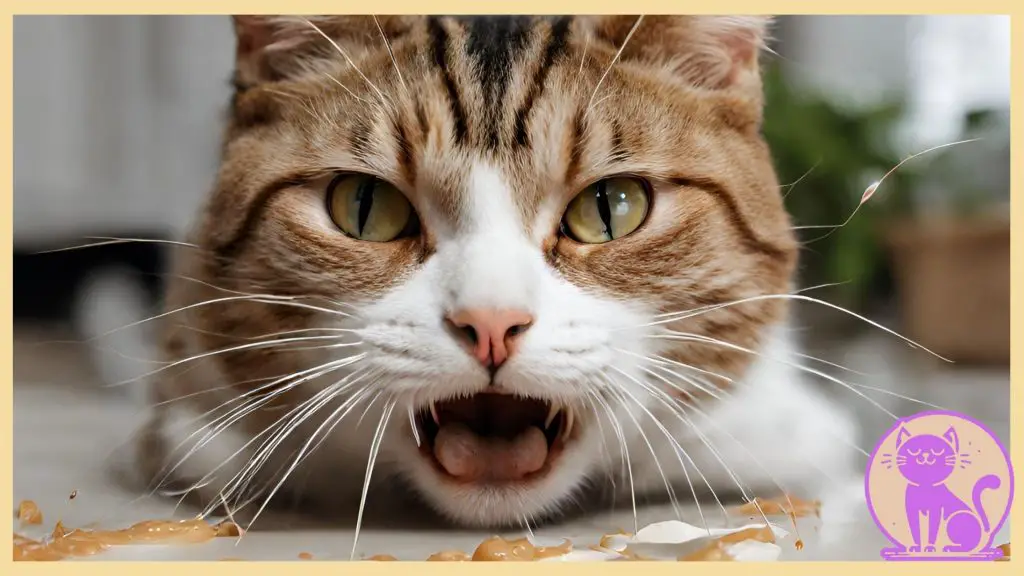
Cats are curious creatures and can sometimes ingest foreign objects or come into contact with toxic substances, leading to vomiting after eating. It’s essential to be aware of potential dangers around the house and take appropriate measures to keep your cat safe.
Ingesting Foreign Objects:
Cats may accidentally swallow small items such as toys, strings, or even pieces of plastic. These foreign objects can cause blockages or irritate the digestive system, resulting in vomiting. Common signs of foreign object ingestion include gagging, retching, or repeated attempts to vomit without success.
If you suspect your cat has ingested a foreign object, it’s crucial to take prompt action. Here are some steps you can follow:
- Assess the situation: Keep calm and evaluate your cat’s symptoms and behavior. If your cat is in distress or experiencing difficulty breathing, contact your veterinarian immediately.
- Do not induce vomiting: Unlike in dogs, inducing vomiting in cats can be dangerous and should only be done under veterinary guidance. In some cases, the foreign object may have sharp edges and can cause further injury or complications if brought back up.
- Check for partial obstruction: If your cat is still eating and doesn’t show any severe signs of distress, monitor their behavior closely. Look out for changes in appetite, weight loss, or any signs of a partial obstruction. If you notice any concerning symptoms, consult your veterinarian.
- Contact your veterinarian: Reach out to your veterinarian to discuss the situation and seek their guidance. They may advise you to bring your cat in for an examination or provide further instructions based on the specific circumstances.
Exposure to Toxic Substances:
Cats are particularly sensitive to certain substances that can be toxic to their system. Common household items that can pose a risk to cats include certain plants, cleaning products, medications, and even certain foods. If your cat ingests a toxic substance, it can result in vomiting and other severe symptoms.
To reduce the risk of poisoning in cats, follow these preventive measures:
- Secure hazardous items: Store any toxic substances out of your cat’s reach, such as household cleaners, medications, pesticides, and certain houseplants. Be aware that some household items, like certain essential oils, can also be harmful to cats.
- Read labels carefully: Always read labels on household products and medications to ensure they are safe for use around cats. If you have any doubts, consult your veterinarian.
- Avoid feeding harmful foods: Some everyday foods that are safe for humans can be toxic to cats. Avoid feeding your cat chocolate, onions, garlic, grapes, raisins, alcohol, caffeine, and any products containing xylitol.
If you suspect your cat has ingested a toxic substance, take immediate action:
- Contact your veterinarian: Notify your veterinarian about the situation and provide them with all the relevant details. They will guide you on the next steps to take based on the specific substance ingested.
- Seek emergency care: If your cat is exhibiting severe symptoms, such as seizures, difficulty breathing, or collapse, contact an emergency veterinarian right away.
- Monitor your cat: While awaiting professional help, keep a close eye on your cat’s condition and behavior. If possible, gather any packaging or substance that your cat may have gotten into for the veterinarian’s reference.
| Potential Dangers to Cats | Preventive Measures |
|---|---|
| Ingested foreign objects | Keep small items out of reach, provide appropriate toys, and supervise playtime. |
| Toxic substances | Store hazardous items securely, read labels carefully, and be cautious with harmful foods. |
Behavioral Factors
Cats can sometimes experience vomiting after eating due to stress, anxiety, or other behavior-related factors. Just like humans, cats can have sensitive stomachs that are affected by their emotions.
When a cat is stressed or anxious, it can trigger a range of physical reactions, including **stress-induced vomiting**. The digestive system is closely tied to the nervous system, so an anxious cat may experience disruptions in digestion that lead to vomiting.
Understanding stress-induced vomiting
Stress-induced vomiting in cats can be caused by a variety of factors, such as:
- Changes in the environment or routine
- Introducing new pets or family members
- Loud noises or sudden movements
- Lack of stimulation or boredom
It’s important to identify the specific triggers that may be causing your cat’s stress. By addressing these triggers, you can help reduce their anxiety and minimize the occurrence of **cat vomiting due to anxiety**.
Creating a calming environment
To create a calming environment for your cat and mitigate behavior-related vomiting, consider implementing the following strategies:
- Provide a safe space: Designate a quiet area in your home where your cat can retreat to when feeling stressed.
- Establish a routine: Kittens thrive on routine, so try to stick to a consistent schedule for feeding, playtime, and other activities.
- Offer environmental enrichment: Provide your cat with toys, scratching posts, and other forms of stimulation to keep them engaged and mentally stimulated.
- Use pheromone diffusers: Pheromone diffusers emit calming scents that can help soothe your cat’s anxiety.
- Practice positive reinforcement: Reward your cat with treats and affection when they exhibit calm behavior, reinforcing positive associations and reducing stress.
By implementing these strategies, you can help reduce **behavior-related vomiting** and create a peaceful, stress-free environment for your feline friend.
| Causes of Stress-induced Vomiting | Symptoms |
|---|---|
| Changes in environment or routine | Repeated vomiting episodes |
| Introducing new pets or family members | Lack of appetite |
| Loud noises or sudden movements | Increased grooming or over-grooming |
| Lack of stimulation or boredom | Weight loss |
When to Consult a Veterinarian
In some cases, cat vomiting after eating can be indicative of a more serious underlying condition that requires prompt veterinary attention. While occasional episodes of vomiting may not always warrant immediate concern, it is essential to monitor your cat closely for any signs of serious issues. Here are some key signs to look out for:
1. Persistent or Frequent Vomiting:
- If your cat is consistently vomiting after every meal or experiencing episodes of vomiting several times a day, it is important to seek veterinary help.**
- **This recurring pattern of vomiting could be a sign of an underlying medical condition that needs medical evaluation.**
2. Changes in Behavior or Appetite:
- If your cat’s vomiting is accompanied by noticeable changes in behavior, such as lethargy or a decline in appetite, it is crucial to consult a veterinarian.**
- **These changes may indicate a more serious issue that requires medical intervention.**
3. Blood in Vomit:
- If you observe any traces of blood in your cat’s vomit, it is considered a red flag and should not be ignored.**
- **Blood in vomit can be a sign of internal bleeding or other serious gastrointestinal issues that necessitate urgent veterinary attention.**
4. Abdominal Pain or Discomfort:
- If your cat exhibits signs of abdominal discomfort, such as vocalization or sensitivity when touched, it is essential to consult your veterinarian.**
- **Abdominal pain can be an indication of an underlying condition that requires medical evaluation for proper diagnosis and treatment.**
The table below summarizes the potential signs of serious issues that may warrant a visit to the veterinarian:
| Signs of Serious Issues |
|---|
| Persistent or frequent vomiting |
| Changes in behavior or appetite |
| Blood in vomit |
| Abdominal pain or discomfort |
If you observe any of these signs or if you are unsure about the severity of your cat’s vomiting, it is always best to err on the side of caution and consult your veterinarian for a thorough medical evaluation.
Conclusion
After exploring the various causes and care options for cat throwing up after eating, it is crucial to stay vigilant and prioritize your cat’s well-being. If your cat continues to experience vomiting or if the condition worsens, it is highly recommended to consult a veterinarian for proper diagnosis and treatment.
By understanding the potential triggers behind cat vomiting and implementing preventive measures, you can help your feline friend enjoy their meals without discomfort. From managing food allergies and sensitivities to addressing behavioral factors and providing a calming environment, there are steps you can take to minimize the chances of vomiting after eating.
Remember to pay attention to your cat’s eating habits, ensure they eat at a comfortable pace, and provide a balanced diet. Additionally, it’s important to keep your home safe by preventing access to toxic substances and foreign objects that could be swallowed.
Ultimately, by taking proactive steps and seeking professional advice when necessary, you can help ensure your cat’s digestive health and overall well-being.
FAQ
Q: What are hairballs and why do they cause vomiting?
A: Hairballs are formed when cats ingest hair while grooming themselves. When these hairballs become too large to pass through the digestive system, cats may regurgitate them, leading to vomiting.
Q: How can I prevent hairballs and regurgitation in my cat?
A: Regular grooming and brushing can help minimize the amount of hair ingested. Additionally, providing hairball prevention supplements or specialized cat food formulated for hairball control can assist in reducing the occurrence of hairballs and subsequent vomiting.
Q: Can food allergies or sensitivities cause my cat to vomit after eating?
A: Yes, cats can develop allergies or sensitivities to certain foods. When they consume these allergens, it can lead to digestive upset, including vomiting. Working with your veterinarian to identify the specific allergen and transitioning your cat to a hypoallergenic or limited ingredient diet may help alleviate the problem.
Q: Why does my cat eat too fast and how does it contribute to vomiting?
A: Some cats eat too quickly due to various reasons such as competition for food or anxiety. This behavior can cause them to swallow excessive air, leading to digestive discomfort and vomiting shortly after eating. Using slow feeding bowls or feeders designed to encourage slower eating can help alleviate this issue.
Q: What are some common gastrointestinal issues that can cause vomiting in cats?
A: Gastrointestinal issues such as inflammatory bowel disease, gastritis, or gastrointestinal obstructions can lead to chronic vomiting in cats. These conditions often require medical intervention and should be evaluated by a veterinarian.
Q: What should I do if I suspect my cat ingested a foreign object or toxic substance?
A: If you suspect your cat has ingested a foreign object or come into contact with a toxic substance, it is important to contact your veterinarian immediately. They will provide guidance on the necessary steps to take, which may include inducing vomiting or bringing your cat in for emergency treatment.
Q: Can stress or anxiety cause my cat to vomit after eating?
A: Yes, stress and anxiety can disrupt a cat’s digestive system, leading to vomiting. Creating a calm and stress-free environment for your cat, providing enrichment activities, and using pheromone products can help reduce stress-related vomiting.
Q: When should I consult a veterinarian about my cat’s vomiting?
A: If your cat’s vomiting persists, becomes more frequent, or is accompanied by other concerning symptoms such as diarrhea, lethargy, or weight loss, it is advisable to consult a veterinarian. They will be able to assess your cat’s condition, perform necessary tests, and recommend appropriate treatment options.
Q: Are there any home remedies or prevention tips for cat vomiting after meals?
A: While home remedies should be used with caution, some general tips to manage and prevent cat vomiting include feeding smaller, more frequent meals, using elevated food bowls, ensuring your cat has access to fresh water, and gradually transitioning to a more easily digestible diet. It is advised to consult with your veterinarian before trying any home remedies.
Q: Is it important to seek veterinary help for cat vomiting?
A: Yes, it is crucial to seek veterinary help if your cat’s vomiting persists or worsens. Your veterinarian can determine the underlying cause, provide appropriate treatment, and offer guidance on how to best support your cat’s digestive health.

